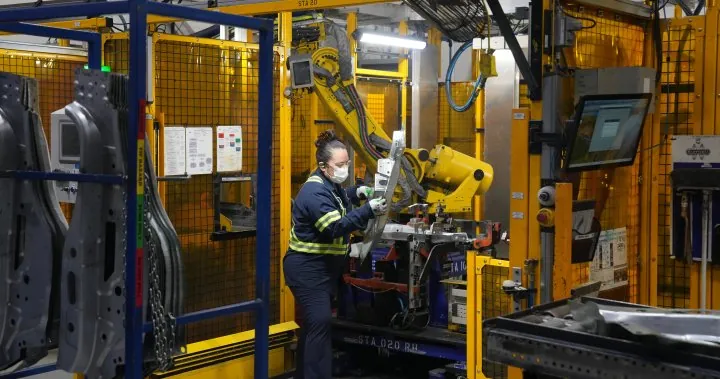
Could Canada Create a Self-Sufficient Supply Chain? Exploring 'Backward Integration' Amid Trade Challenges
2025-03-29
Author: Michael
Introduction
As the trade tensions between the United States and Canada reach a boiling point, Canadian leaders are devising ambitious strategies to re-architect the nation's economy and supply chains. But will these plans actually materialize into a viable solution?
Economic Autonomy and Backward Integration
In response to new tariffs threatened by U.S. President Donald Trump on automotive imports, Prime Minister Mark Carney has diverted his focus from campaigning to urgently addressing Canada’s trade landscape as the April 2 deadline looms. He has advocated for what he terms “economic autonomy” through the establishment of a fully integrated Canadian supply chain.
Carney articulated a concept of “backward integration,” suggesting that Canada must establish stronger domestic links within its supply chains. “Our old relationship with the U.S. is over,” he declared, emphasizing the need for Canada to integrate its supply chains to bolster resilience against foreign threats.
Political Support for Domestic Production
The vision is not limited to automotive manufacturing. Leaders from various political parties are echoing similar sentiments. Conservative leader Pierre Poilievre has called for a surge in housing production utilizing Canadian lumber, a sector also confronted by U.S. tariff threats. "By building millions of new homes with Canadian lumber, we can support local workers while enhancing affordability for families," Poilievre asserted.
The New Democratic Party (NDP) leader, Jagmeet Singh, has vowed to ensure that U.S. companies don’t exploit Canadian resources, instituting a mandate for Canadian-made vehicles in federal agencies and potentially exempting these from the Goods and Services Tax (GST) to stimulate local manufacturing.
Understanding Backward Integration
Ernan Haruvy, a marketing professor at McGill University, clarified that “backward integration” refers to the synergy within the supply chain, melding different suppliers into a centralized system. This would mean connecting early-stage manufacturing, like steel production, directly to later phases, such as vehicle assembly.
Challenges of Disentangling Supply Chains
The Canadian automotive supply chain, which includes an average of 30,000 parts, is a prime candidate for such integration, particularly as parts currently cross borders multiple times, adding cost and complexity. “Instead of autos moving back and forth across the border six times, we need to create a robust supply chain right here in Canada,” Carney stated.
However, experts warn that disentangling the deeply integrated nature of current supply chains will be a formidable task. "With forty years of free trade history, it’s challenging to envision a completely separate supply chain today,” said economist Moshe Lander. He pointed to the previous industrial model where manufacturing was localized, a stark contrast to today's globalized production networks.
Investment in Domestic Capabilities
While optimism remains about building out domestic capabilities, analysts agree that significant investment will be necessary to revamp industries from the ground up. Notably, Flavio Volpe, president of the Automotive Parts Manufacturers Association, expressed belief in Canada's ability to sustain its auto industry, albeit with the caveat that relocation of supply chains could take upwards of a year and a half.
Conclusion
Interestingly, Canada has demonstrated agility in pivoting domestic production during critical times—such as the rush to produce N95 masks during the COVID-19 pandemic—indicating a potential capacity for similar adaptations across other sectors.
As political leaders engage in discussions about Canada’s economic future, many are questioning whether a full transition to self-sufficiency within vital supply chains is feasible. Would a shift to domestic production radically alter the Canadian economy, or would it simply inflate costs in a global market? With tariffs looming and a changing geopolitical landscape, Canada stands at a crossroads that could redefine its manufacturing framework. Stay tuned as this story unfolds, as the implications for Canadian jobs, innovation, and economic independence could be monumental.









 Brasil (PT)
Brasil (PT)
 Canada (EN)
Canada (EN)
 Chile (ES)
Chile (ES)
 Česko (CS)
Česko (CS)
 대한민국 (KO)
대한민국 (KO)
 España (ES)
España (ES)
 France (FR)
France (FR)
 Hong Kong (EN)
Hong Kong (EN)
 Italia (IT)
Italia (IT)
 日本 (JA)
日本 (JA)
 Magyarország (HU)
Magyarország (HU)
 Norge (NO)
Norge (NO)
 Polska (PL)
Polska (PL)
 Schweiz (DE)
Schweiz (DE)
 Singapore (EN)
Singapore (EN)
 Sverige (SV)
Sverige (SV)
 Suomi (FI)
Suomi (FI)
 Türkiye (TR)
Türkiye (TR)
 الإمارات العربية المتحدة (AR)
الإمارات العربية المتحدة (AR)